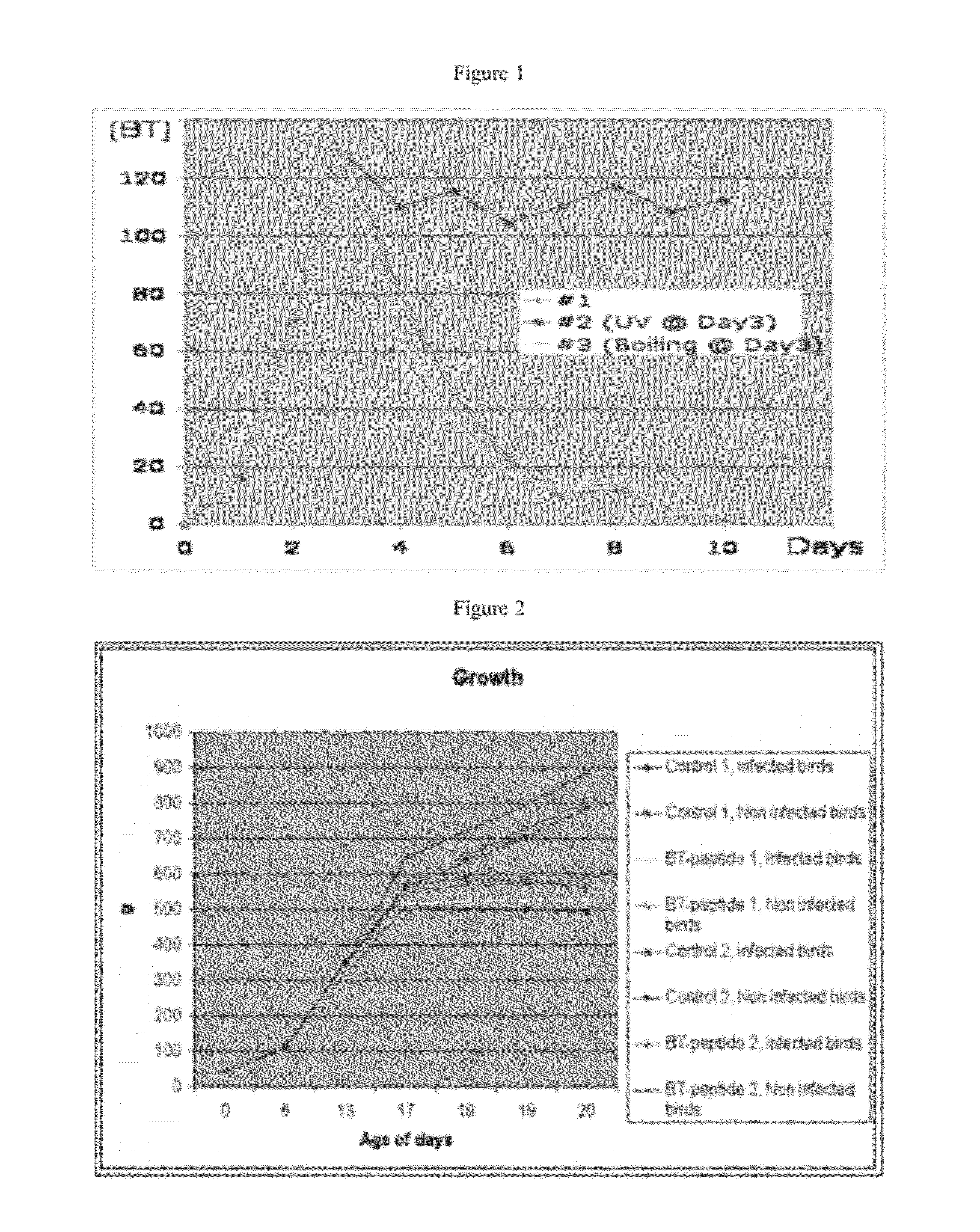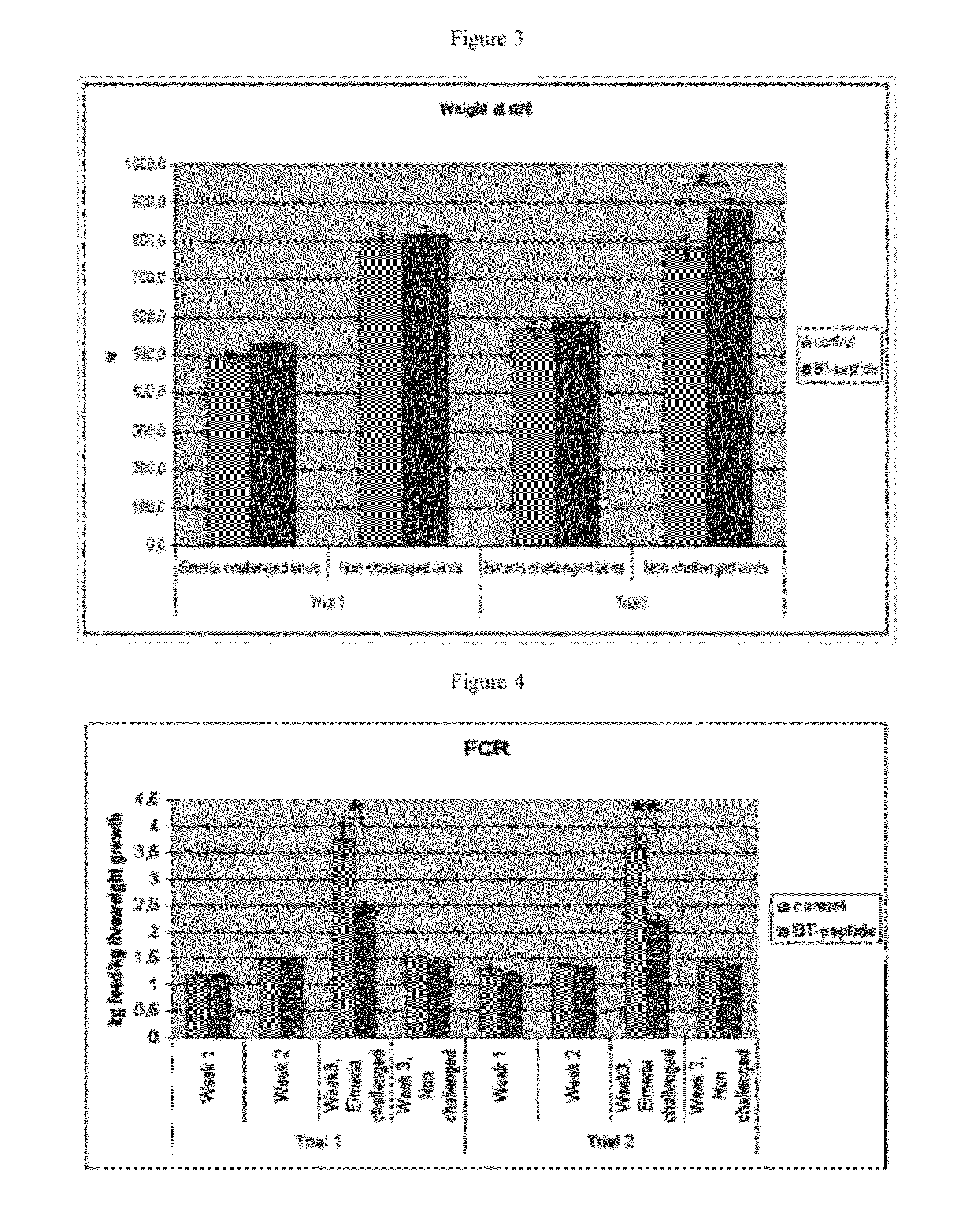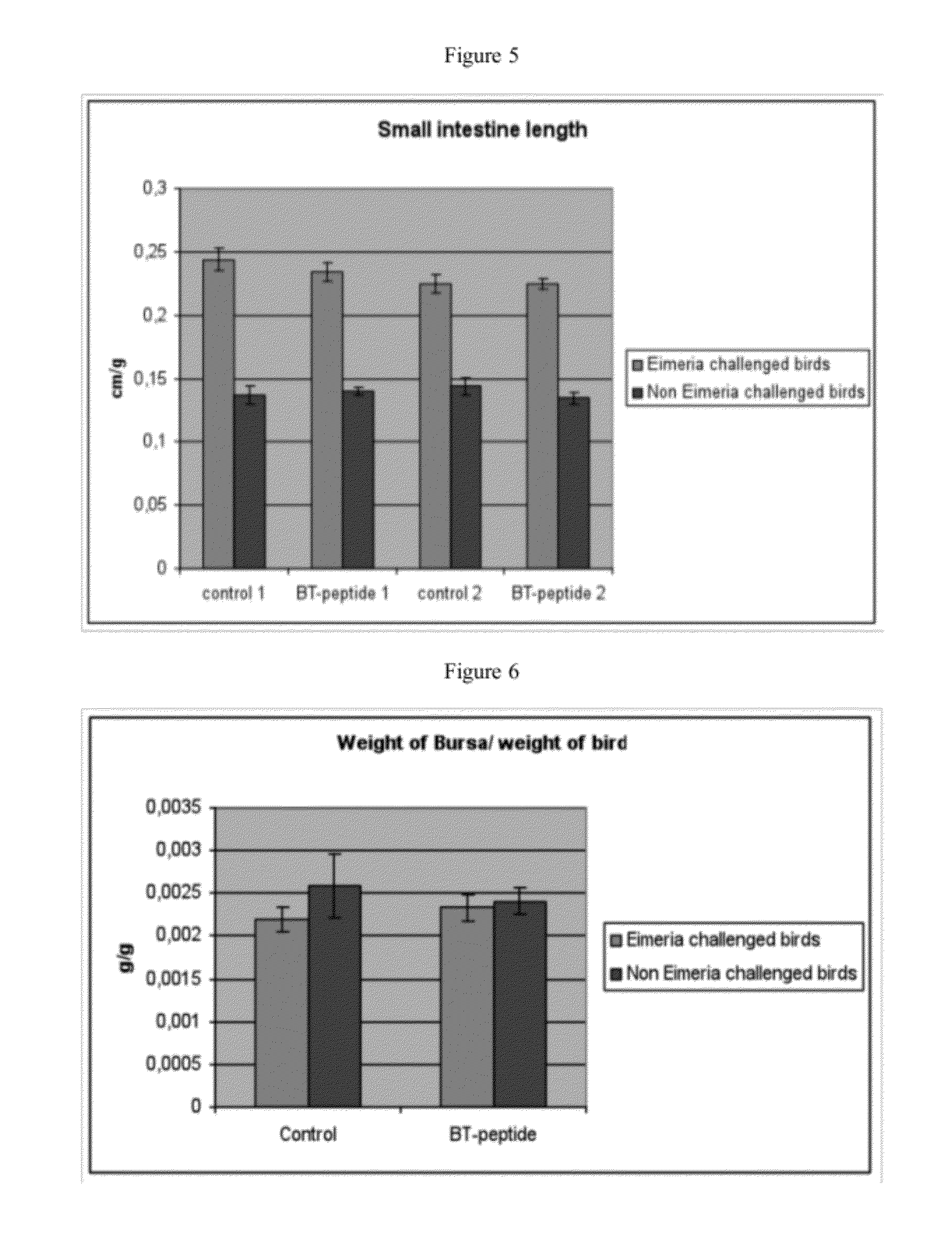Sporulation-Deficient B. texasporus Cells and Methods for Efficient and Cost-effective Inactivation and Use Thereof
a technology of texasporus and sporulation, applied in the field of biotechnology, can solve the problems of general use of all antibiotic drugs to enhance the growth of farm animals, decolonize commensal, and increase the cost of production to a point where it is no longer economically viable, and achieve the effect of effective shifting the ph and lowering the ph
- Summary
- Abstract
- Description
- Claims
- Application Information
AI Technical Summary
Benefits of technology
Problems solved by technology
Method used
Image
Examples
example 1
[0084]An attempt to isolate a sporulation-deficient mutant of PTA-5854 was made as follows. PTA-5854 cells were mutagenized with EMS and then plated onto LB-agar. About 50,000 colonies were screened for sensitivity to treatment at 75° C. for 1 hour, and 42 temperature sensitive candidate strains were isolated. These initial candidate strains were colony-purified and retested for heat sensitivity. The PTA-5854 strain and the temperature sensitive candidate strains were grown in liquid LB medium at 37° C. for three days. The cells were then dispensed into sterile microfuge tubes as 100 μl aliquots and incubated at various temperatures (75, 70, 65, 60, 55, 50 or 37° C.) for different lengths of time (5, 15, 30 or 60 minutes). The treated cells were plated onto LB-agar and incubated at 37° C. overnight to determine plating efficiency. The survival rate after a heat shock treatment was calculated as the plating efficiency after heat shock divided by the plating efficiency at 37° C. witho...
example 2
[0104]In order to assess the effect of veterinary-grade BT peptides (comprising inactivated B. texasporus cells which contain immunomodulatory BT cationic peptides) in preventing necrotic enteritis caused by an oral challenge of Clostridium perfringens (type A), necrotic enteritis lesions and / or mortality were obtained in challenge birds.
[0105]In Experiment 1, veterinary-grade BT at about 24 ppm and about 48 ppm delivered in feed reduced necrotic enteritis lesion scores from 2.3 to 0.6 and 0.5 respectively, mortality from 17% to 6% and 7%, respectively, and intestinal recovery of C. perfringens from 3.60 to 2.36 and 2.48 (log10 cfu / g) respectively (p≦0.05).
[0106]In Experiment 2, veterinary-grade BT at about 24 ppm and about 48 ppm delivered in feed reduced necrotic enteritis lesion scores from 2.8 to 0.8 and 0.6 respectively, mortality from 21% to 5% and 1%, respectively, and intestinal recovery of C. perfringens from 3.12 to 1.88 and 1.31 (log10 cfu / g) respectively (p≦0.05).
[0107]T...
example 3
[0120]Veterinary grade BT (inactivated B. texasporus cells) are actually non-antibiotic, although the cells carry the natural BT peptides that appear to have an antibiotic activity when measured with an in vitro assay. However, the in vitro assay is believed to produce an artificial result. BT does not act as an antibiotic in vivo, instead it is believed to enhance / prime the immune system of the animal, explaining why beneficial and commensal bacterial levels remain relatively unaffected but the levels of detrimental bacteria are reduced in animals treated with BT peptides or cells. This also explains why orally delivered veterinary grade BT (in inactivated cells) at 96 ppm had no impact in vivo on what appeared, using the in vitro assay, to be BT-sensitive beneficial and commensal gut bacteria (see Example 4).
PUM
 Login to View More
Login to View More Abstract
Description
Claims
Application Information
 Login to View More
Login to View More - R&D
- Intellectual Property
- Life Sciences
- Materials
- Tech Scout
- Unparalleled Data Quality
- Higher Quality Content
- 60% Fewer Hallucinations
Browse by: Latest US Patents, China's latest patents, Technical Efficacy Thesaurus, Application Domain, Technology Topic, Popular Technical Reports.
© 2025 PatSnap. All rights reserved.Legal|Privacy policy|Modern Slavery Act Transparency Statement|Sitemap|About US| Contact US: help@patsnap.com



